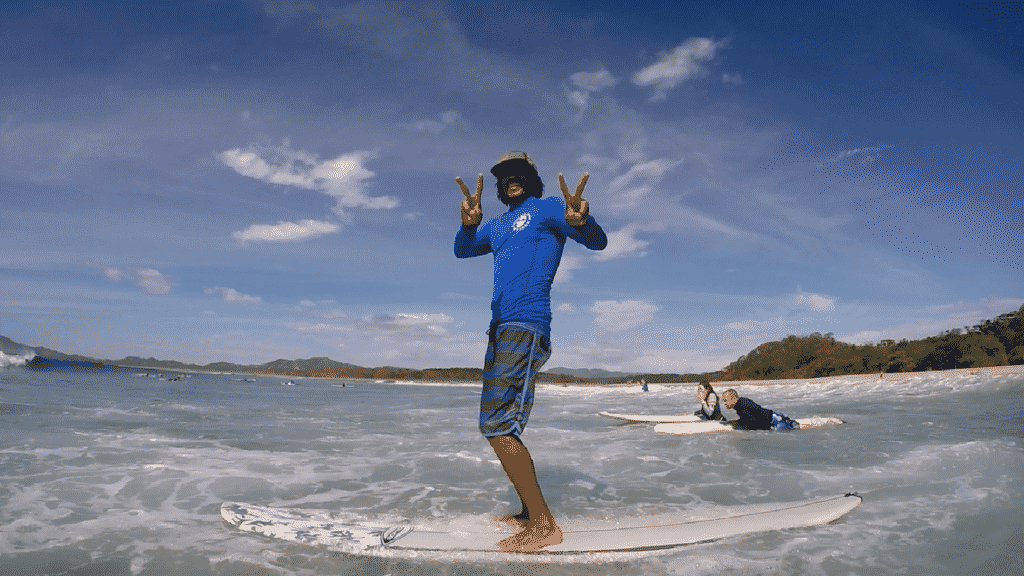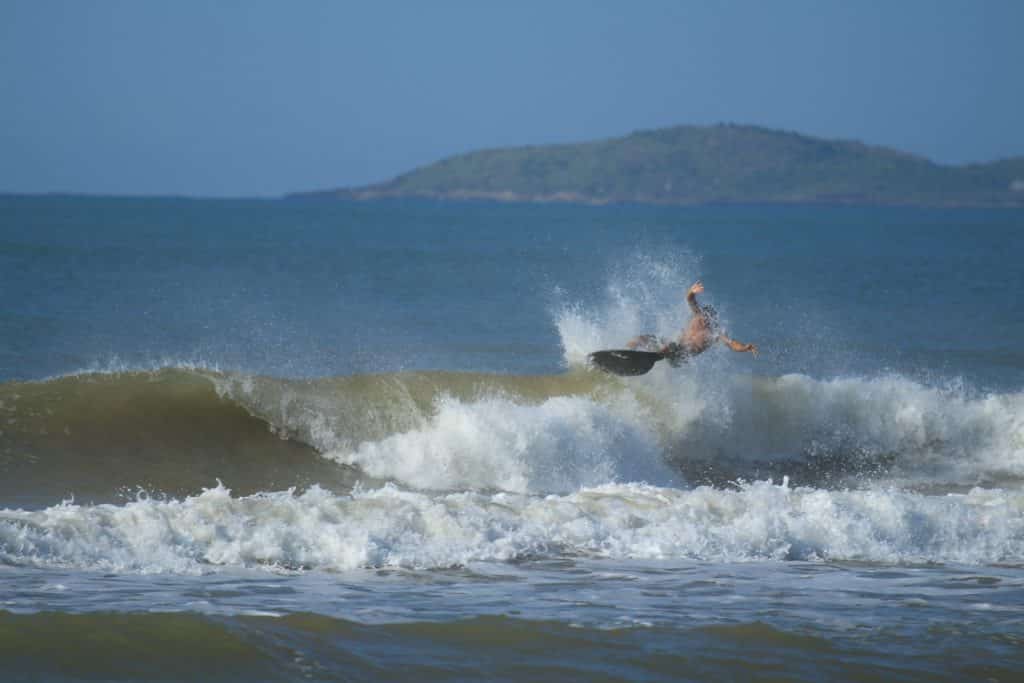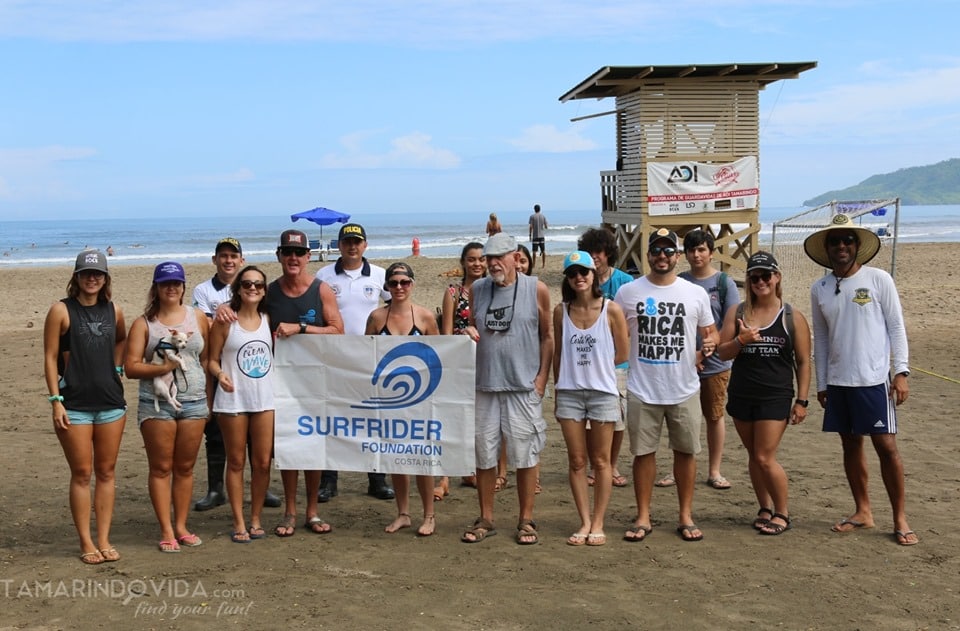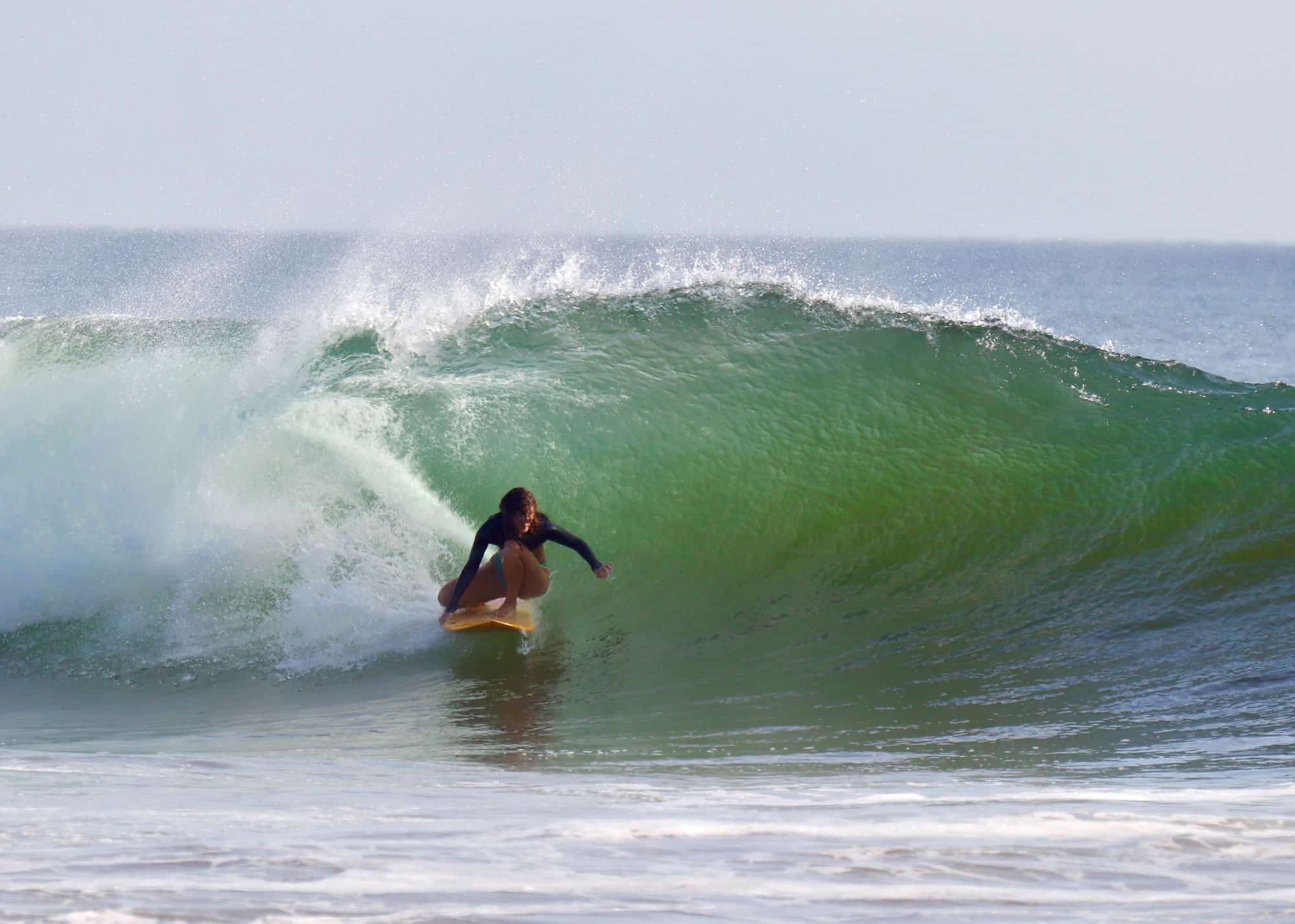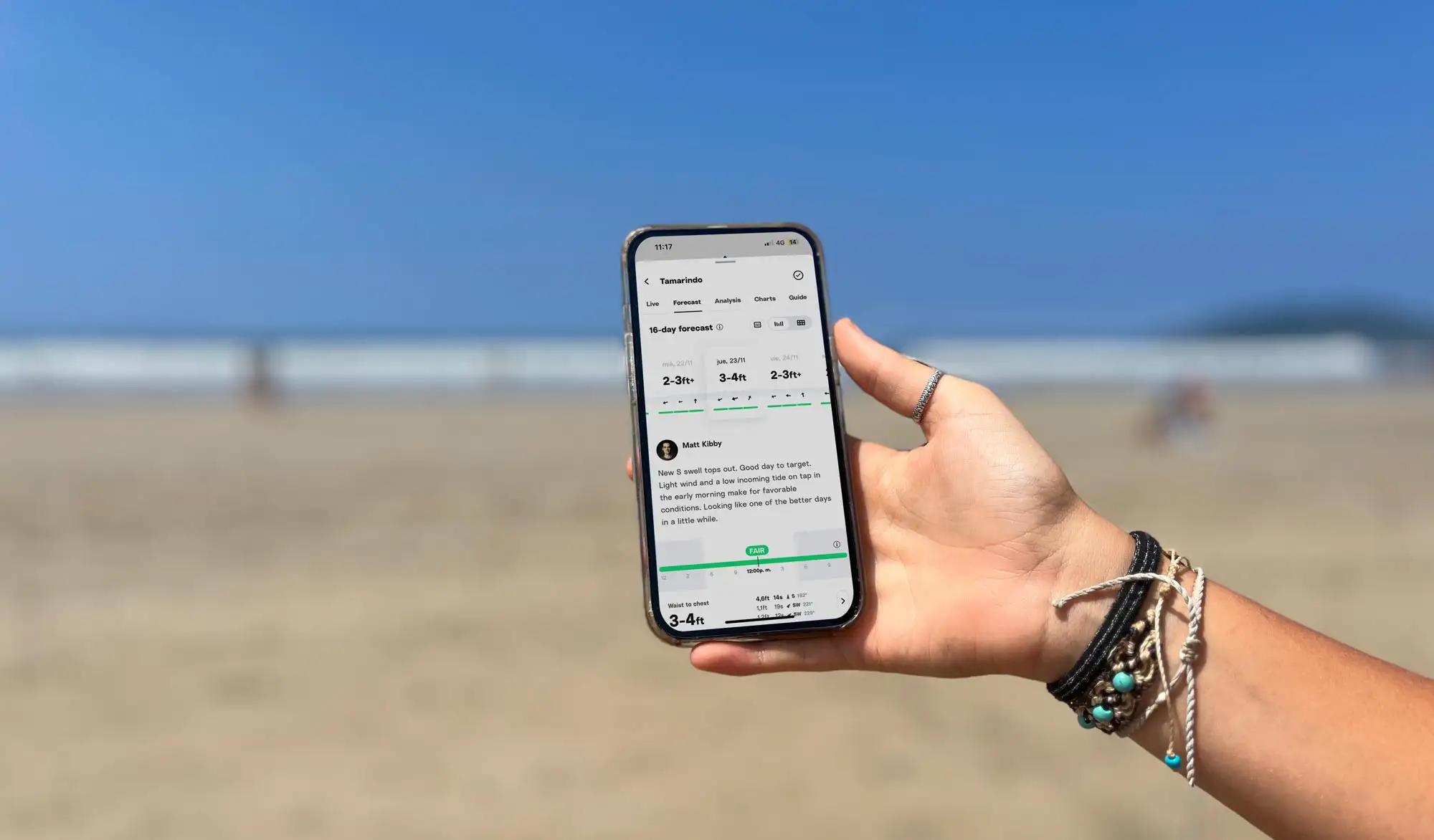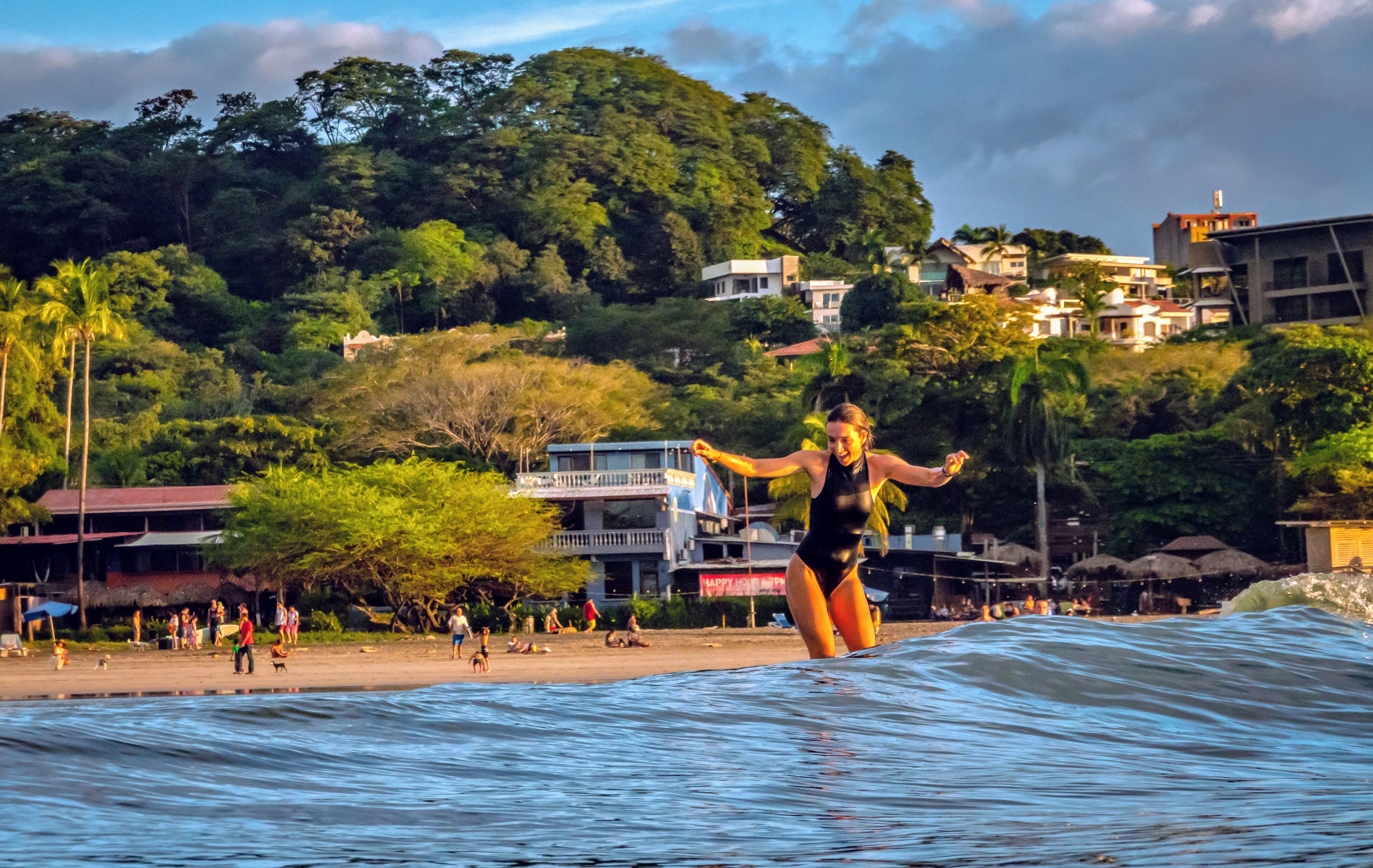And How to Avoid Them.
People often ask, “Are you afraid of getting attacked by a shark when you surf? I always respond by saying I am in more danger driving to the beach than I am while actually in the water surfing.
The reality is that getting bitten by a shark is one of the smallest risks you face when surfing. Ironically, I’ve found that the one thing that is most dangerous while surfing is also the thing you need the most… Your surfboard.
There is a pretty good chance that if you go surfing, you will get hit by your surfboard or someone else’s surfboard. 90% of the time, getting hit by a surfboard doesn’t result in anything more than a bruise. But to make sure things don’t get more serious, be aware of the following situations and check out the tips below.
YOUR BOARD
Yes, the board you are trying to stand on can fight back and give you a few bruises. Here the three most common ways you can get hit by your own board, and the best way to avoid them from happening:
1) A wave pushes the board back into you as you are trying to jump over it.
When walking out to the lineup you have to get yourself and your board past the break zone which typically has whitewater waves rolling in. As you push your way through, the force of the wave pushes back trying to knock you and your board back to shore.
TIP: To prevent this from happening, always keep your board at your side as you are walking out to the waves. Even though it may seem instinctual to hold the board in front of you like a shield, keep the board beside you when you are not paddling. If possible, lift the nose of your board up and over the wave by pushing down on the tail.
2) Falling in front of your board.
Just like in other sports, there is a right way and a wrong way to wipeout. As the wave pushes you and your board forward, there is a chance that you will fall in front of your board. This will increase your chances of a collision.
TIP: Most of the time, there is a brief moment between popping-up on the board to falling down where you can anticipate how the wave will toss you. The trick is to shift your weight towards the tail of the board so you fall backwards onto your bum… You will also find that you will be able to push the board away from your body with your feet as you are falling. It may take a little practice, but as you are on your board, do your best to remember that there is a right, and wrong way to fall.
3) Surfacing underneath your board.
Many times, when falling off your board, you will find yourself underwater for several seconds as the wave rolls past. Natural instinct tells us to come up for air quickly. However, while you’re under the water, your board may actually be floating above your head or getting tossed around by the wind or the wave.
TIP: Cover your head with your arms when you wipeout. Also, if you are underwater, be sure to stick your hands above your head to feel for your board as you come up. Even if you are getting tumbled underwater, you can get a sense for where your board is by how hard your leash is pulling your leg. If your leash is tight, then the board should be far enough away to resurface safely. If your leash has slack, then you can be fairly certain that the board is going to be close when you surface, so keep your hands above you as you swim to the surface to protect your head.
Someone Else’s Board
Everyone surfing will, at some point, make a mistake and unexpectedly fall off their board. The worst part about this is when the wipe-out results in the board hitting someone else. Here are three scenarios that you should be ready for.
1) Someone falls in front of you as you are paddling out.
Just riding a wave is hard enough, but things get real tricky when a surfer has to maneuver around a moving object. Although some surfers might be able to surf around people paddling out, there are plenty of people that will not have those skills and will wipeout in front of other surfers resulting in their board becoming a dangerous missile. This train-wreck situation is hard to watch, not only because it hurts, but because it is preventable.
TIP: Before you even get into the water, study the lineup to determine the area where most surfers are riding waves. Once in the water, do your best to swim around the area that is breaking. And, avoid cramming together on the same peak. When paddling out to the waves, if someone is surfing directly toward you, do the following:
- Paddle really hard (if the surfer is right in front of you riding the green face of the wave, paddle towards the white water so you don’t ruin their wave)
- Make noise (A loud “Yewww!” is the most common warning sound)
- Raise your arms (it helps for them to see you)
- Stay on your board (bailing your board causes a bigger hazard)
- Apologize (even if you didn’t mean to get in the way, an apology can help calm nerves and maintain positive vibes in the water)
- Anticipate where the surfer is headed and move yourself accordingly (if the surfer is a beginner, they will most likley not have any board control to avoid you. If the surfer is more advanced, anticipate the line they are drawing, and get out of their way)
- If you are a beginner, don’t surf the main peak of a surf spot where the advanced surfers are.
Things can get pretty intense in the impact zone so making yourself seen will allow for other surfers to avoid you and hopefully not run into you.
2) Someone bails their board as you are surfing past them:
As a surfer is riding a wave down the line, it is common for the other surfers to be paddling to get out of the way. Most beginner surfers will panic as a surfer is riding toward them and ditch their board to get out of the way. As the surfer, you need to now think about riding the wave, as well as avoiding stray surfboards floating in your path.
TIP: As the person with the most control in this situation, the best way to avoid this type of collision to give the person paddling out A LOT of space. That way, if a board does get pitched at you, you will be outside the range of the board. If that is not possible and you have to surf directly past someone, simply make eye contact (or holler at them) so they know you see them.
3) Someone who is not wearing a leash falls off their board:
Sometimes there are more advanced surfers who choose not to wear a leash because they are skilled enough to hold onto their board. However, every once in a while they fall and lose their board which then turns into a missile as the waves push it to shore.
TIP: If you see a board coming at you, the best thing to do is to cover your head and go underwater. Don’t try to block it with your hands or your own board… just get underwater and the board will pass over you. When you surface, take a look at your board and pray there are no new dings.
GENERAL SAFETY TIPS
If you are a beginner level surfer I highly recommend using a foam board until you get the hang of standing up and navigating around in the ocean. Foam boards greatly reduce the severity of a collision which makes it more fun for everyone.
One last tip is to choose the place you surf according to your level of expertise. Bigger and heavier waves with lots of people will greatly increase the chances of getting hit with a board. Surfing a mellow, slow rolling wave with a thin crowd is a safer option.
A perfect example of a great safe break is directly out in front of Witch’s Rock Surf Camp in Tamarindo. Check out our live surf cam and live vicariously through our daily surf reports. With friendly warm waves, Tamarindo is the perfect place to have a fun and safe surf session. Pura Vida.


